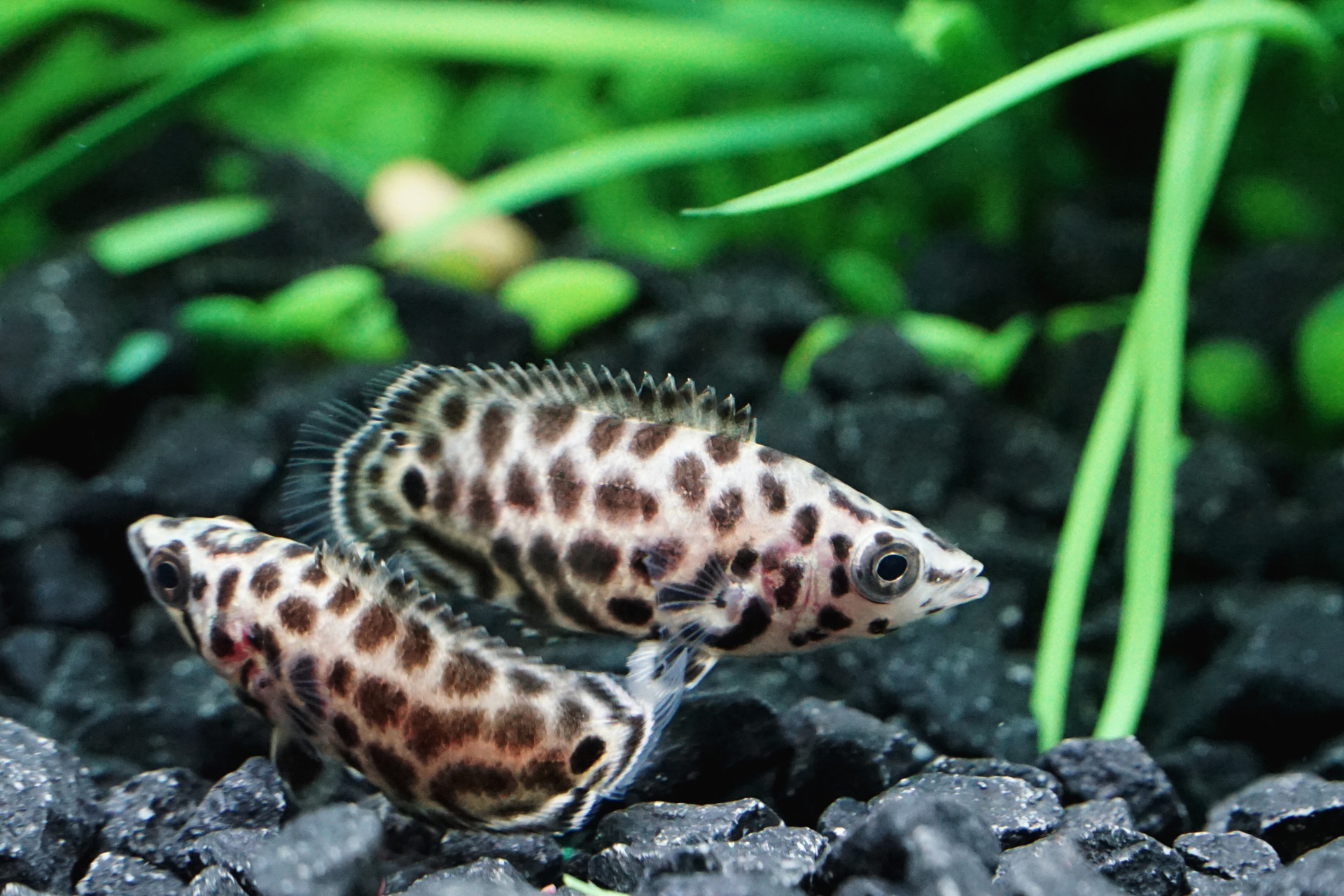Ctenopoma acutirostre: The Spotted Climbing Perch

By the genus alone we can already draw certain conclusions about the Spotted Climbing Perch, the name Ctenopoma is derived from the Greek word Cteno, meaning comb or cover. One can say that this either refers to the spines on the gill, the spiny dorsal fin crest or both. The latter part of the name, acutirostre, refers to the Latin word acut meaning sharp rostrum, referring to the pointed nose of the animal. Many favor this animal for their resemblance to the Leaf fish. The leopard markings which goes towards much of their appeal also helps them camouflage in their niche, hiding from both potential predator and prey. Hailing from Africa in the Congo River Basin, C. acutirostre is found in many of the stagnant lake/pond areas and even the fast moving rivers. C. acutirostre is a predator, which is most active during the twilight hours (more on this in captive care). The animal has reportedly reached lengths of eight inches in the wild though six is much more common and most specimens don't even reach that.
This animal has a very 'spiny' crest along their dorsal spine as well as spines along the gills. This is important because they are easily damaged during capture and transit, which leads to infection and stress; this is the number one cause of the animal's death in captivity so please exercise caution. If received in good condition the animal is resilient when provided with the following minimum conditions:
Ph: 6.0-8.0
dH: 5-12
Temperature: 68-78F
As you can see these animals can handle a pretty large range of conditions, the key however is to not let theses parameters sway and to keep them stable.
While these animals are not particularly aggressive or territorial (barring turf wars with conspecifics) they are predators and should be treated as such. This means you should stock community tank-mates that aren't small enough to be eaten. Having a lighting system that incorporates a dusk or moonlight phase will emphasize the viewing pleasure of these animals. As they are mostly nocturnal and feed during night-time hours this will encourage natural behavior and feeding in your specimens.
As far as feeding goes most specimens will only take to live food, this said prepared meaty foods should be offered in an attempt to entice them into accepting a more reliable food source. There is however no garauntee for this.